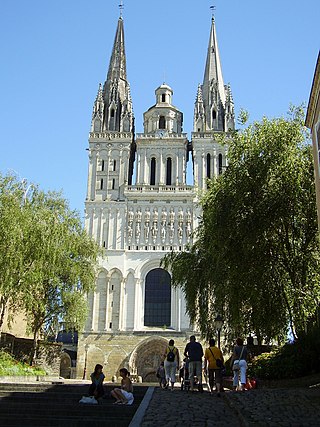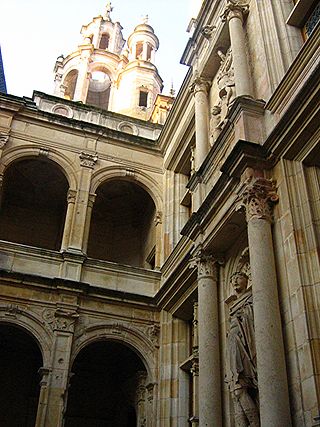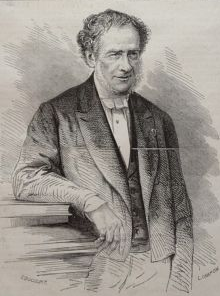
Lys was a department of the French First Republic and French First Empire in present-day Belgium. It was named after the river Lys (Leie). It was created on 1 October 1795, when the Austrian Netherlands and the Prince-Bishopric of Liège were officially annexed by the French Republic. Prior to this annexation, its territory was part of the County of Flanders. Its Chef-lieu was Bruges.

Escaut was a department of the French First Republic and French First Empire in present-day Belgium and Netherlands. It was named after the river Scheldt, which is called the Escaut in French. It was created on 1 October 1795, when the Austrian Netherlands and the Prince-Bishopric of Liège were officially annexed by the French Republic. Before annexation by France, its territory was part of the County of Flanders and the Dutch Republic (Staats-Vlaanderen).

Deux-Nèthes was a department of the First French Republic and of the First French Empire in present-day Belgium and the Netherlands. It was named after two branches of the river Nete. The southern part of its territory corresponds more or less with the present-day Belgian province of Antwerp. It was created on 1 October 1795, when the Austrian Netherlands were officially annexed by the French Republic. Its territory was the northern part of the former duchy of Brabant. After the annexation of the Kingdom of Holland in 1810, the department was expanded with the western half of the present-day Dutch province of North Brabant, itself historically part of the Duchy of Brabant.

Meuse-Inférieure was a department of the French First Republic and French First Empire in present-day Belgium, Netherlands and Germany. It was named after the river Meuse. Its territory corresponded largely with the present-day provinces of Belgian and Dutch Limburg. It was created on 1 October 1795, when the Austrian Netherlands and the Prince-Bishopric of Liège were officially annexed by the French Republic. Before this annexation, its territory was part of the County of Loon, the Austrian Upper Guelders, the Staats-Oppergelre, the County of Horne, the Abbacy of Thorn, Maastricht and part of the Lands of Overmaas. The lands of the original medieval Duchy of Limburg were associated with the Overmaas lands, lying to their south. The two regions had long been governed together and referred to collectively with both names, but the original Duchy lands were not part of this new entity.

Sambre-et-Meuse was a department of the French First Republic and French First Empire in present-day Belgium. It was named after the rivers Sambre and Meuse. It was created on 1 October 1795, when the Austrian Netherlands and the Prince-Bishopric of Liège were officially annexed by the French Republic. Prior to this annexation, the territory included in the department had lain in the County of Namur, the Prince-Bishopric of Liège and the Duchies of Brabant and Luxembourg.

Ourthe was a department of the French First Republic and French First Empire in present-day Belgium and Germany. It was named after the river Ourthe (Oûte). Its territory corresponded more or less with that of the present-day Belgian province of Liège and a small adjacent region in North Rhine-Westphalia in Germany. It was created on 1 October 1795, when the Austrian Netherlands and the Prince-Bishopric of Liège were officially annexed by the French Republic. Before this annexation, the territory included in the department had lain partly in the Bishopric of Liège, the Abbacy of Stavelot-Malmedy, the Duchies of Limburg and Luxembourg, and the County of Namur.

Jean-Baptiste Geneviève Marcellin Bory de Saint-Vincent was a French naturalist, officer and politician. He was born on 6 July 1778 in Agen (Lot-et-Garonne) and died on 22 December 1846 in Paris. Biologist and geographer, he was particularly interested in volcanology, systematics and botany. The standard author abbreviation Bory is used to indicate this person as the author when citing a botanical name.

Dyle was a department of the French First Republic and French First Empire in present-day Belgium. It was named after the river Dyle (Dijle), which flows through the department. Its territory corresponded more or less with that of the Belgian province of Brabant, now divided into Walloon Brabant, Flemish Brabant and the Brussels-Capital Region. It was created on 1 October 1795, when the Austrian Netherlands and the Prince-Bishopric of Liège were officially annexed by the French Republic. Before the annexation, its territory was partly in the Duchy of Brabant, partly in the County of Hainaut, and partly in some smaller territories.

Jemmape was a department of the First French Republic and of the First French Empire in present-day Belgium. It was named after the Battle of Jemappes, fought between the French and the Austrians in 1792 near the village of Jemappes, near Mons. Jemappes was spelled Jemmape, Jemmapes or Jemmappes at the time. Its territory corresponded more or less with that of the Belgian province of Hainaut. It was firstly created on 2 March 1793, and then recreated on 1 October 1795, when the Austrian Netherlands and the Prince-Bishopric of Liège were officially annexed by the French Republic. Before annexation, its territory lay in the County of Hainaut, Tournai and the Tournaisis, the County of Namur (Charleroi) and the Bishopric of Liège (Thuin).

Jean-Jacques Daniël Dony was an inventor and industrialist. He invented a procedure for the production of pure zinc, and opened a mine in Moresnet.

The Diocese of Angers is a Latin Church diocese of the Catholic Church in France. The episcopal see is located in Angers Cathedral in the city of Angers. The diocese extends over the entire department of Maine-et-Loire.

The Académie des Sciences, Arts et Belles-Lettres de Caen was founded in Caen (Normandy) by Jacques Moisant de Brieux in 1652.

Pierre Laurent Barthélemy François Charles de Saint-Cricq was a French customs administrator and politician. He was a deputy from 1815–20 and 1824–33, Minister of Commerce & Manufacturing (1828–29) and a peer of France.

Jean Baptiste Smits was a Belgian Member of Parliament and minister.

Jean-Urbain Guérin was a French draughtsman and miniaturist. With Jean-Baptiste Isabey and Jacques Augustin, he is still held to be one of the most notable miniaturists of his time.
The Ministry of Justice was the justice ministry of the Ottoman Empire, based in Constantinople. It also served as the Ministry of Religions.
Events in the year 1874 in Belgium.

Neu-Moresnet is a village and sub-municipality of Kelmis in the German-speaking community of the province of Liège, Wallonia, Belgium. The village was founded as Prussian-Moresnet as part of the Lower Rhine Province. In 1919, after World War I, it was awarded to Belgium, and renamed Neu-Moresnet. In 1940, it was annexed by Nazi Germany, and in 1944, it was returned to Belgium. Neu-Moresnet was an independent municipality until 1977 when it was merged into Kelmis.
Pierre I Biard l'Aîné (1559 – 17 September 1609) was a French sculptor and architect, part of a lineage of prominent sculptors.

















